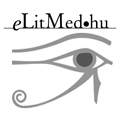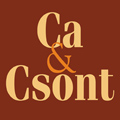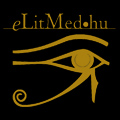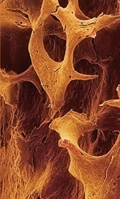The eLitMed.hu medical portal uses computer cookies for convenient operation. Detailed information can be found in the Cookie-policy.
Ca&Bone - 2003;6(04)
Content
[The effects of thyroid hormones on bone]
[The effects of thyroid hormones on bone tissue are of fundamental importance.They are required for skeletal development and later for normal bone metabolism.Their action is dose-dependent and also depends on the degree of differentiation of the target tissue. In childhood, thyroid hypofunction manifests itself in growth retardation, whereas hyperfunction will accelerate bone maturation.The exact mechanism of action of thyroid hormones on bone in later years is poorly understood, and their clinical relevance on the risk of bone fracture, the most important complication, is also unclear. In adults with hypothyroidism, bone mineral density (BMD) remains unchanged or even becomes increased, but the risk of fractures is elevated. In hyperthyroidism the bone turnover is increased, which may lead to a decrease in BMD and a higher risk of fracture. However, the results are inconsistent for endogenous subclinical hyperthyroidism, where BMD may also decrease and fractures may occur more frequently.Treatment of hypothyroidism may temporarily result in increased fragility but this phenomenon seems to be only transient. During L-T4 replacement therapy the TSH level should be kept in the normal range, while with suppression, it should be set to the lower end of the normal range. During treatment of hyperthyroidism BMD temporarily increases and the risk of fractures decreases.The most effective way of preventing osteoporosis and bone fractures in all cases is the early recognition and treatment of thyroid diseases.The presence of other osteoporosis risk factors should always be considered. In some cases adjuvant therapy may be necessary to stop bone loss.]
[Vitamin D supply and the effect of short term calcium and vitamin D supplementation in postmenopausal women with osteoporosis or osteopenia]
[INTRODUCTION - The effect of short-term calcium and vitamin D supplementation by a clinical nutriment on bone formation and resorption was studied in postmenopausal women with normal or decreased calcidiol serum levels. PATIENTS AND METHODS - Ninety-one postmenopausal women (age, 60-75 years) were enrolled in the study to investigate the effect of 1120 mg calcium and 208 IU vitamin D in a complex composition (Fortimel®, Nutricia) on bone turnover after 4 weeks of treatment. All women suffered from osteopenia or osteoporosis detected by bone densitometry. Serum parathyroid hormone levels and bone turnover markers (serum β-CrossLaps, osteocalcin and alkaline phosphatase) were determined before and after the treatment. Moreover, calcidiol serum level was also measured at the beginning of the study to assess vitamin D supply. A questionnaire was used to assess gastrointestinal side effects and urinary calcium/creatinine ratio was calculated to estimate the risk of kidney stone development. RESULTS - In the entire patient group the mean serum level of β-CrossLaps was elevated (526.97±29.26 pg/ml) before the study and decreased during the treatment (485.58±28.27 pg/ml, p=0.03).The mean serum level of osteocalcin (28.58±1.37 vs. 27.03±1.36 ng/ml, p=0.025) and serum alkaline phosphatase activity (200.46±8.72 vs. 186.94±11.64 U/l, p=0.033) both decreased.The serum 25-OH vitamin D3 was below 30 ng/ml in 20 patients before the treatment, suggesting vitamin D deficiency.A correlation (r=0.508, p<0.001) between the decrease of bone formation and the decrease of bone resorption was found only in patients with normal serum 25-OH vitamin D3 concentration (>30 ng/ml). However, bone turnover did not decrease in patients with calcidiol deficiency. Urinary calcium/creatinine ratio remained unchanged during the treatment, but two patients suffered from constipation and one of them had diarrhea due to the calcium supplementation. CONCLUSIONS - Calcium and vitamin D supplementation in a complex clinical nutriment proved to be effective in decreasing bone turnover in postmenopausal women with good vitamin D supply, even after a short treatment period of 4 weeks. However, this treatment was ineffective in patients with vitamin D deficiency suggesting the importance of serum calcidiol measurement before calcium supplementation. Calcium in complex with other nutrients such as citrate did not increase the risk of renal stone formation in the short run, and only caused gastrointestinal problems in a tiny fraction of patients.]
[Assessment of quality of life in postmenopausal women with osteoporosis - A comparative study on the Hungarian adaptations of EuroQoL and Nottingham Health Profile]
[INTRODUCTION - After a brief introduction to the definition of quality of life and the importance of its measurement, two questionnaires, the EQ-5D and the Nottingham Health Profile are presented. PATIENTS AND METHODS - Fifty postmenopausal women with osteoporosis were included in the two-year prospective study to assess quality of life by the two generic questionnaires. Correlations were sought between the results of the EQ-5D and the Nottingham Health Profile, as well as between bone fractures and changes in quality of life.The validated Hungarian version of the Nottingham Health Profile was applied for the first time in postmenopausal osteoporosis. RESULTS - With the treatments applied, quality of life dimensions did not change significantly during the follow-up period and no significant correlation was found between the incidence of bone fractures and changes in quality of life.The pain, physical mobility, emotional reactions and energy dimensions of the validated Hungarian Nottingham Health Profile and its derivated index showed significant correlations with those of the EQ-5D. CONCLUSION -The validated Hungarian version of the Nottingham Health Profile quality of life questionnaire is a useful and applicable measurement tool in postmenopausal osteoporosis which correlates with the EQ-5D health state measure.]
[Renal stone formation after parathyroidectomy in patients with primary hyperparathyroidism]
[INTRODUCTION - The incidence of renal stone formation was studied in patients with primary hyperparathyroidism after parathyroidectomy. PATIENTS AND METHODS - Ninety-two patients operated on for hyperparathyroidism were included in the study. In Group 1 the patients (n=44) had kidney stones before parathyroidectomy. Patients with no history of nephrolithiasis (n=48) before the operation were assigned to Group 2. After the operation the occurrence of renal stones was assessed for both groups.The presence of any association between the recurrence of renal stones and various clinical parameters was analysed. RESULTS - The serum concentration of Ca and parathormone decreased to the normal range in both groups after the operation. Stone formation was observed in nine cases in five patients during follow-up. All five patients belonged to Group 1.Thirty-three % of these recurrent stones were diagnosed within the first year and 89% within 5 years. Statistical analysis did not reveal any significant association between recurrent stone formation and gender, age, preoperative serum levels of Ca and parathormone or the histology of parathyroid glands. CONCLUSION - The incidence of recurrent renal stones after successful parathyroidectomy significantly decreased in patients with primary hyperparathyroidism.]
1.
Clinical Neuroscience
[Headache registry in Szeged: Experiences regarding to migraine patients]2.
Clinical Neuroscience
[The new target population of stroke awareness campaign: Kindergarten students ]3.
Clinical Neuroscience
Is there any difference in mortality rates of atrial fibrillation detected before or after ischemic stroke?4.
Clinical Neuroscience
Factors influencing the level of stigma in Parkinson’s disease in western Turkey5.
Clinical Neuroscience
[The effects of demographic and clinical factors on the severity of poststroke aphasia]1.
2.
Clinical Oncology
[Pancreatic cancer: ESMO Clinical Practice Guideline for diagnosis, treatment and follow-up]3.
Clinical Oncology
[Pharmacovigilance landscape – Lessons from the past and opportunities for future]4.
5.









